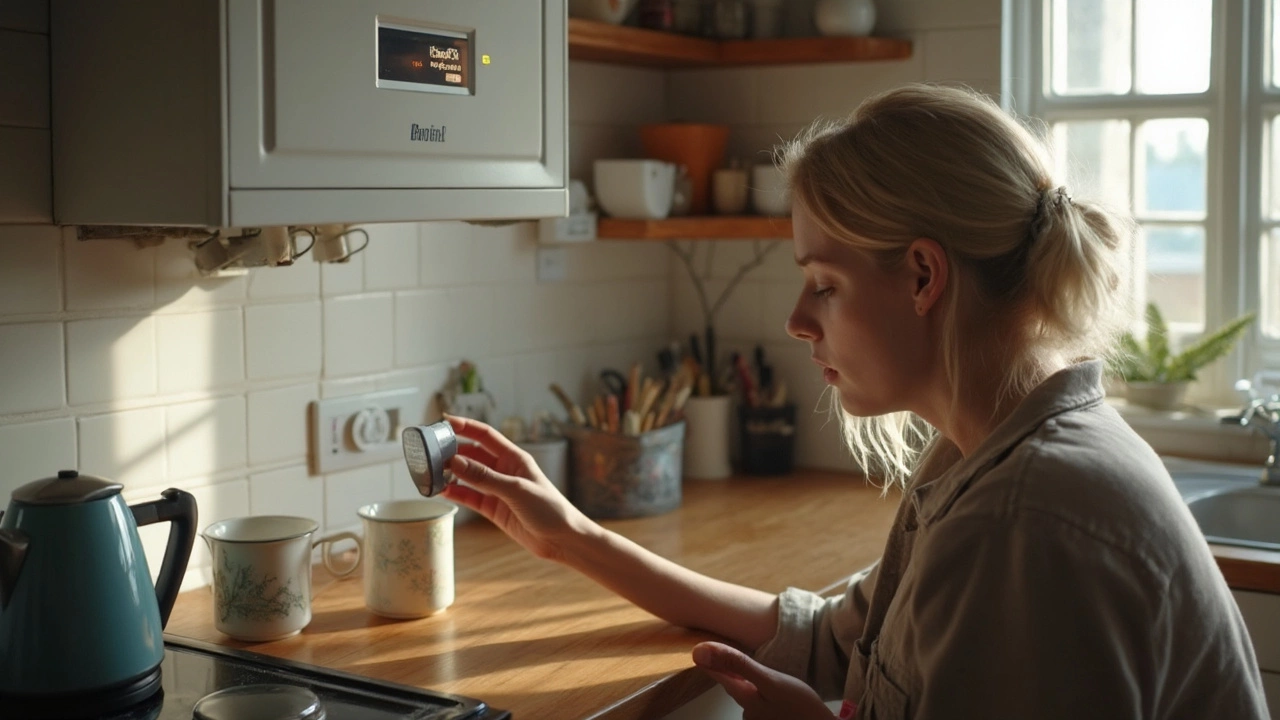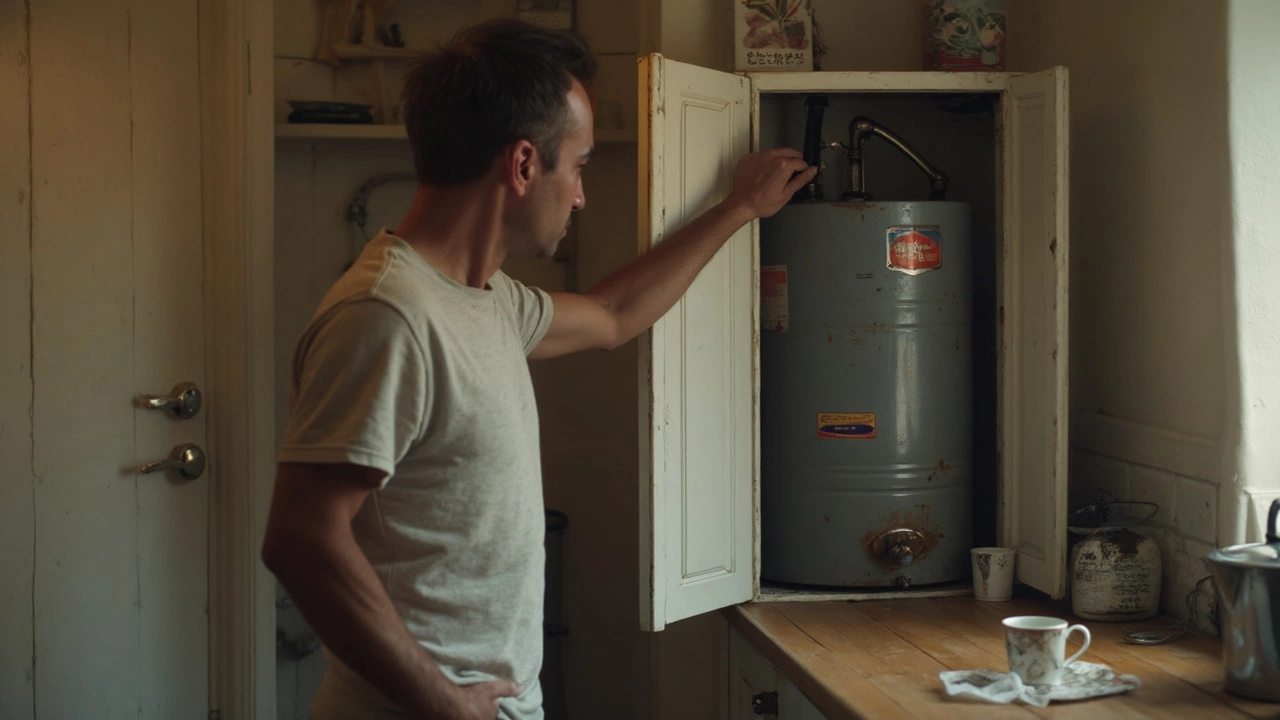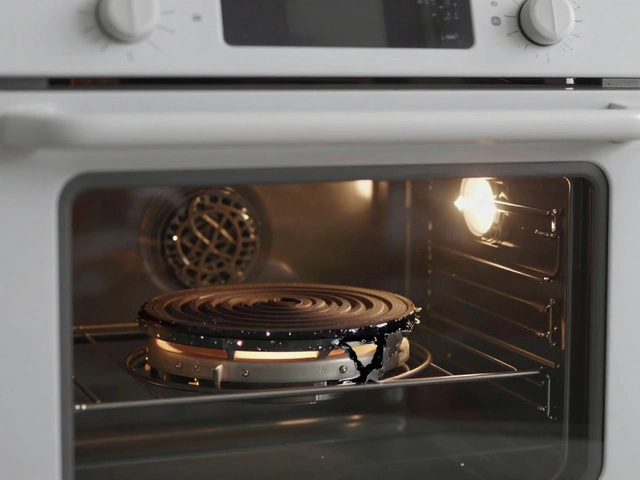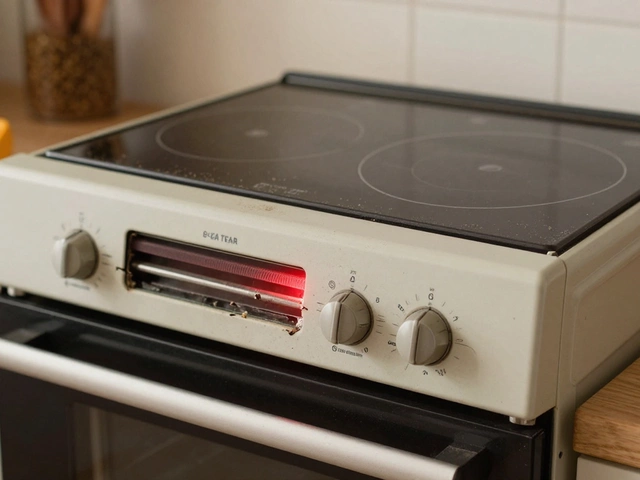Ever feel like you’re living on repeat with your water heater, always running out of hot water and then dragging yourself to hit that reset button again? If that little red button is your morning routine, there’s a reason for it, and it usually means your water heater is trying to tell you something’s up.
The reset button’s not there for fun—it’s a safety feature. When it trips, it’s because your heater’s getting too hot or something inside just isn’t right. You don’t want to ignore it or keep pressing the button, hoping for the best. Kind of like how I know when my dog Rex is acting off, your water heater gives clear signs too.
It usually comes down to a few troublemakers: a busted thermostat, a bad heating element, wiring issues, or even some sneaky sediment buildup. Each of those can mess with the safe operation of your heater, making it overheat or plain stop working.
- Reset Button: What It’s Really For
- Common Reasons Your Water Heater Trips
- Easy Checks You Can Do Yourself
- When Should You Call a Pro?
- Tips to Avoid Repeat Resets
Reset Button: What It’s Really For
That reset button on your water heater—the one you probably didn’t notice until you started needing to use it—is actually a built-in safety switch called the ECO (Energy Cut Off) or high limit switch. It’s there to stop your water heater from getting dangerously hot. Think of it as a circuit breaker for your hot water system. If something makes the water temperature spike past a safe limit, the reset button will pop out and kill the power to stop the problem from getting worse.
The big question: Why does it trip? More often than not, it’s warning you about overheating, usually because something inside is failing. This could be a stuck thermostat, a broken heating element, or even faulty wiring. Here’s a look at the common reasons the reset button comes into play:
- Thermostat Malfunction: If the thermostat can’t cut off properly, water just keeps heating up until it trips the switch.
- Broken Heating Element: Sometimes, the heating element shorts out and won’t shut off.
- Loose or Burnt Wires: Bad or burned wiring from age or corrosion leads to unsafe operation and trips the reset.
- Sediment Buildup: Minerals pile up over time, making parts overwork or fail.
It’s not just about comfort—overheating water can be a serious safety risk. Scalding water burns happen in seconds above 140°F (60°C). That’s why newer water heaters have the ECO feature by default and set the limit around 180°F (82°C).
| Temperature (°F) | Burn Time for Adult |
|---|---|
| 120 | More than 5 min |
| 130 | 30 seconds |
| 140 | 5 seconds |
| 150 | 1 second |
If you have to hit the water heater reset button even once a week, your heater’s sending you a warning. Ignoring it isn’t an option because it can mean bigger risks or total failure are just around the corner.
Common Reasons Your Water Heater Trips
When your water heater keeps shutting off and forcing you to smack that reset button, it’s more than annoying—it’s usually a warning signal. The most common culprits are actually pretty straightforward, and knowing them can save you a bunch of guesswork.
- Thermostat Failure: The thermostat is supposed to control your water temperature. If it breaks or starts “sticking,” it can fail to shut off the heat, causing dangerously high temps that trigger the reset.
- Burnt-Out Heating Element: Electric water heaters have one or two heating elements. If they start short-circuiting, they can overheat the tank, making the safety breaker trip.
- Wiring Problems: Loose or damaged wires act like mini lightning storms inside the tank, sometimes shorting things out and heating up areas that shouldn’t get hot. That trips the system, too.
- Sediment Buildup: Over time, minerals from hard water stack up at the bottom of the tank or around the elements. Too much buildup can trap heat and make the tank run hotter than it should—or mess with temperature readings, setting off the reset.
- Faulty Reset Button: Like any button, the reset switch itself can wear out. If it’s gotten weak, it might trip way before it should or even at random.
Manufacturers and repair techs see these causes over and over. In fact, a recent 2024 survey of home water heater issues in the U.S. showed these four problems make up over 85% of residential calls.
| Problem | How Often (out of 100 calls) |
|---|---|
| Thermostat Issues | 37 |
| Heating Element Fails | 23 |
| Wiring Problems | 16 |
| Sediment Buildup | 12 |
| Other | 12 |
If your water heater reset keeps tripping, odds are it’s one of these. Ignoring these hints often leads to colder showers, higher repair bills, or way worse—like water leaks or electrical danger. Knowing what’s likely going on helps you figure out what to check or what to mention if you end up calling a pro.
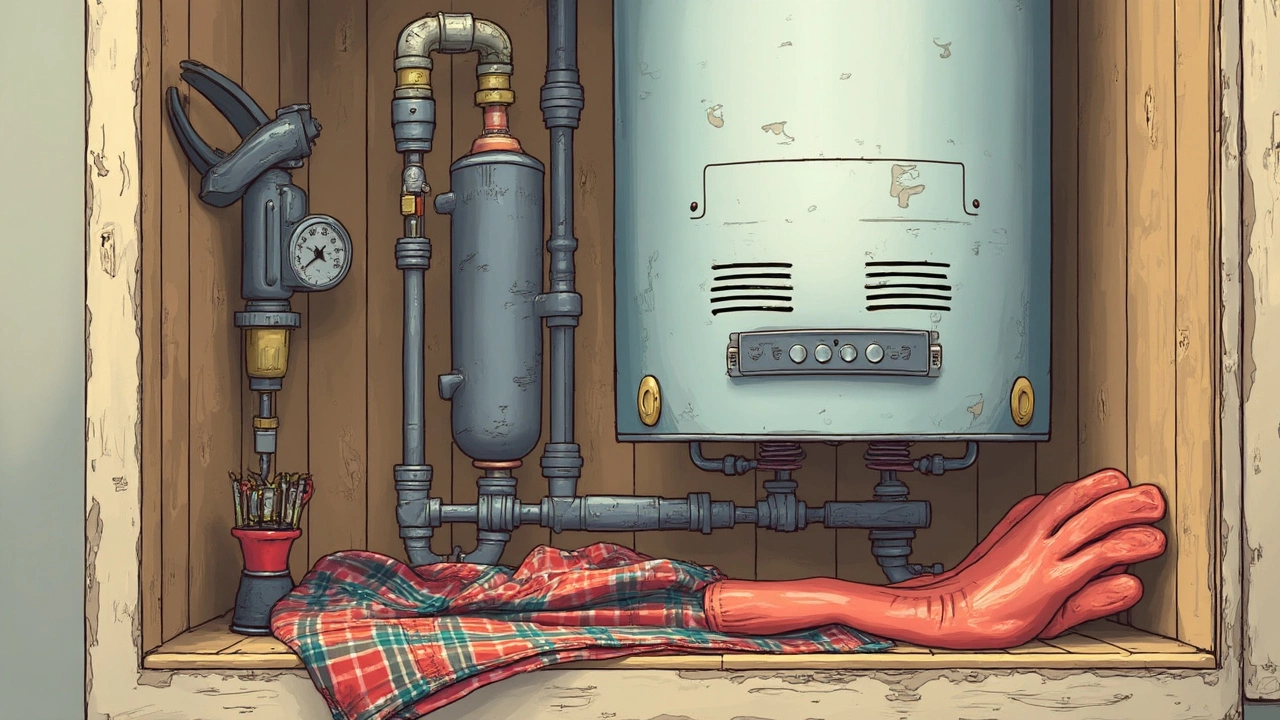
Easy Checks You Can Do Yourself
If you keep pressing the water heater reset button, try these quick checks before calling in a pro. Most issues come from stuff you can spot or rule out without special tools. Just make sure your water heater is switched off at the breaker before starting—no one wants a shock on top of a cold shower.
- Look for a Tripped Breaker: Head over to your breaker panel and see if the switch for the water heater has flipped. Reset it if it has. Breakers trip for a reason, usually when there’s a short or overload.
- Check the Thermostat Settings: Make sure they’re not set crazy high. The safe range is 120–140°F (most experts recommend 120°F for safety and energy savings).
- Inspect for Water Leaks: Any puddles or drips around the base or from the pipes? That can signal all sorts of issues, including a busted heating element or pressure problems.
- Look for Burn Marks or Smells: Pop the cover off the upper and lower thermostats (with power OFF). If you see scorch marks or smell something burnt, that’s a red flag for electrical trouble.
- Test for a Faulty Heating Element: If you hear popping, crackling, or see rust-colored water, that’s a clue your element might be going bad. Elements can burn out, especially if you have hard water, which a 2022 survey from the Water Quality Association says affects about 85% of homes across the U.S.
These checks will help you narrow down the problem:
| Possible Issue | What to Look For | DIY Fix? |
|---|---|---|
| Tripped breaker | Breaker switch off/moved | Yes |
| Bad thermostat | Odd readings, scorch marks | Depends on skills |
| Busted element | Rusty water, odd noises | Possible, but tricky |
| Leaks | Puddles under/near tank | Usually no |
If you’ve gone through these steps and still can’t get hot water for more than a short burst, don’t keep resetting. That’s your heater’s way of saying it needs a real fix, not just a temporary workaround.
When Should You Call a Pro?
Sometimes, messing with your water heater crosses into dangerous territory. If you keep hitting the water heater reset button and nothing changes (or things get worse), it’s past time to get an expert. Don’t risk getting shocked or making the problem bigger.
Here’s when you should pick up the phone and call a licensed plumber or electrician:
- Repeated Trips: If you’ve had to reset your heater more than once a week, something is seriously wrong. That’s not normal at all and points to electrical or component failures.
- Scorching Hot Water: If water feels much hotter than usual (think nearly burning you), your thermostat is likely busted. This is a dangerous situation and can cause burns or even tank failure.
- Blown Fuses or Tripped Breaker: If resetting your heater causes your circuit breaker to trip or you find blown fuses, stop and call a pro immediately. That could mean wiring issues, which are a major fire hazard.
- Water Leaks: Wet spots around your heater or odd dripping noises? Water and electricity don’t mix. You'll want a qualified technician to take a look right away.
- Burning Smell or Scorch Marks: Any sign of burnt wires or a plastic smell isn’t something to shrug off. Unplug the heater and get it checked out before using again.
In the U.S., more than 35,000 home fires every year are linked to electrical issues, with faulty appliances being a big share of that. Water heaters work with both water and high-voltage power—a risky combo for DIY repairs if you don’t know what you’re doing.
| Common Issue | DIY Safe? | Needs a Pro? |
|---|---|---|
| Reset button tripping multiple times | Risky | Yes |
| Thermostat replacement | No | Yes |
| Small sediment flush | Usually | No |
| Fixing exposed wires | Never | Yes |
| Replacing heating element | No | Yes |
One more tip: If your water heater is over 10 years old and giving you constant grief, a professional might suggest replacing it entirely. That can save you money and headaches in the long run. Bottom line? If it feels unsafe or you’re stuck in a loop of resets, let a pro handle it.

Tips to Avoid Repeat Resets
If you’re tired of messing with your water heater reset button, simple changes can keep things running smooth and save you the hassle.
- Water heater reset button trips often when the thermostat is set too high. Most experts suggest sticking to 120°F (49°C). Anything higher makes overheating—and resets—way more likely.
- Flush your tank at least once a year. Sediment, like loose minerals and gunk from hard water, builds up over time and can block sensors or heating elements. Flushing helps clear things out.
- Check and replace old thermostats every 3–5 years. Stats show that aging or stuck thermostats are a leading reason for surprise cold showers and frequent resets.
- Inspect wiring if you’re handy, but don’t poke around if you’re not sure what you’re doing. Frayed or loose wires inside the panel can make the heater trip, so leave it to a pro if you spot anything weird.
- Add a surge protector. Power spikes can mess with your unit’s brain and cause resets, especially in older homes.
Here’s what some common tips and stats look like in real life:
| Prevention Tip | Expert Recommendation |
|---|---|
| Thermostat Setting | 120°F prevents most overheating resets (EPA, 2023) |
| Annual Tank Flush | Removes up to 2 inches of sediment per year in hard water areas (USGS) |
| Thermostat Replacement | 3–5 years before most start failing (Manufacturer Data) |
| Surge Protection | Reduces reset/safety trips by 20% in older homes (Consumer Reports, 2024) |
Start with the easy stuff. If you keep tripping that button even after trying these tips, it’s probably time for a professional to check things out. Keeping up with basic care often means you’ll never have to touch that reset again—unless you really like pushing buttons.
